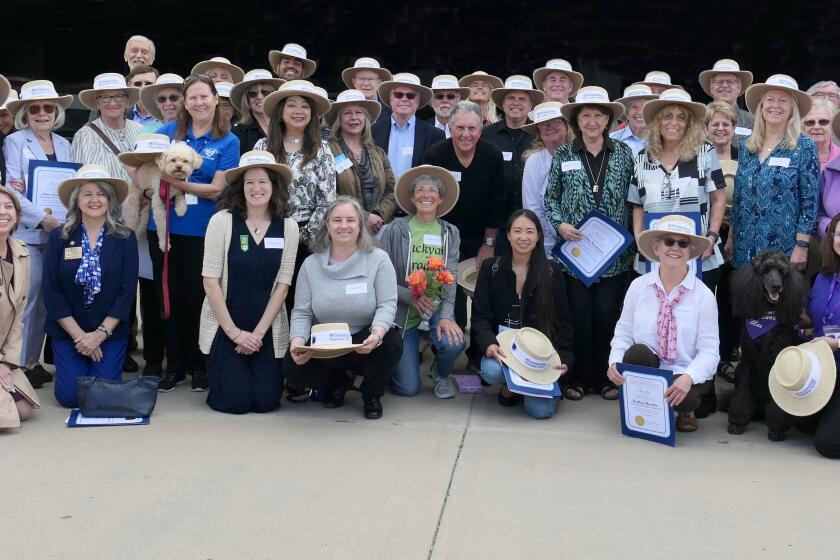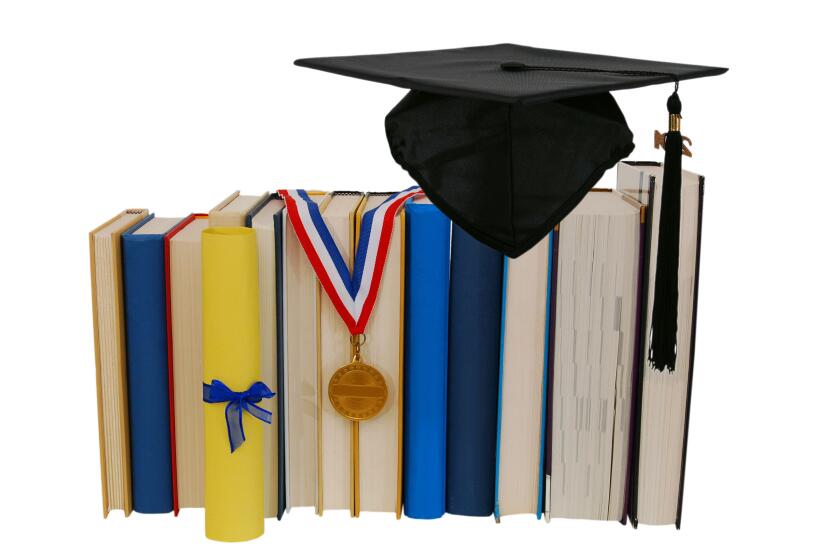Oak Valley students headed to national Science Olympiad
Oak Valley Middle School’s Science Olympiad team is headed to the national competition in May.
Head coach Cass Kaminetz said Oak Valley is the first San Diego team to qualify for the national contest in 20 years and the first Poway Unified School District team to ever qualify.
The team of 15 students and four alternates won the Southern California State Science Olympiad Tournament on April 8. It was held at the California Institute of Technology in Pasadena. Oak Valley beat 30 other teams from throughout Southern California.
The win means Oak Valley can represent Southern California at the Science Olympiad National Tournament, set for May 19 and 20 at Wright State University in Dayton, Ohio.
“By winning first place and earning the opportunity to contend with the best teams in the nation, these students have surpassed all of our expectations,” Kaminetz said.
“San Diego is a hotbed of science innovation and all of our students benefit from the incredible support of our dedicated coaches, parents and volunteers,” she said. “If these students represent the future of homegrown scientists in San Diego County, it is a bright one indeed.”
The 2017 Oak Valley Middle School Science Olympiad State and National Team members are eighth graders Jason Chang, Arjun Ghoshal, Eagan Kaminetz, Kate Liu, Barath Raj, Kiersten Russ, Arul Salaniwal, Luya Wei, Ian Xu and Jason Zhuang; seventh graders Tanmay Marwah, Aashi Mittal, Kaavya Raamkumar, Devam Shrivastava; and sixth grader Connor Wang. The alternates are seventh grader Vihan Jayaraman and sixth graders Noor Grewal, Ishan Kapoor and Hetvi Trivedi.
There are several parents and other volunteers who help coach the students for the individual events, Kaminetz said. She mentioned parent Nilay Trivedi as a key leadership team member.
Kaminetz said around 180 students started out the year in Science Olympiad. Since the school could enter six teams in the local contest the group was narrowed to the top 90 students, who were selected based upon several factors including their class ranking and how well the devices they invented worked. When Oak Valley qualified for state it could only take one team, so the top 15 students were selected along with four alternates. The latter participated in non-scoring competitions and were available to fill in should a team member be unable to compete.
She said there are 23 events and each team member competes in two, three or four events, selected on their likeliness to excel in an event. The events are anatomy and physiology, bottle rocket, crime busters, disease detectives, dynamic planet, ecology, experimental design, fast facts, food science, hovercraft, invasive species, meteorology, microbe mission, mission possible, optics, reach for the stars, road scholar, rocks and minerals, scrambler, towers, wind power, wright stuff and write it do it.
For example, in “crime busters” students must identify perpetrators of a “crime” by using paper chromatography and analysis of unknown solids, liquids and plastics found at a crime scene. For “mission possible” they design, build, test and document a Rube Goldberg-like device while in “write it do it” the technical writing exercise has students writing a description of a contraption and other students attempting to recreate the item based on that description, according to the Science Olympiad website.
Kaminetz said students know what concepts to study for each event, not the details until the competition. Sometimes they have volunteer coaches who work in the required field to teach them. Other times a coach must learn along with the students. One year when there was no one with the technical knowledge to help with bridge building, Kaminetz said she taught herself before working with the students. She added that Oak Valley teachers often provide behind-the-scenes support and former team members now at Del Norte High mentor the middle schoolers too.
“They have practical experience,” she said, adding, “the group becomes very close since (members) love competing and learning.”
Qualifying for the national contest was a surprise, Kaminetz said, since “we knew the team was doing well, but we were not guaranteed first place.”
She said the team’s trajectory has been very quick, placing 21st at state three years ago, 12th two years ago and seventh last year. It qualified for state this year after coming in second at the San Diego Regional. That near-win “really motivated” the students to work hard in preparing for state, she said. For example, Kaminetz’ son, Eagan, spent 30 hours a week practicing.
The unexpected win has also meant parents are scrambling to come up with the money to take the team to Ohio, she said. They estimate it will cost $25,000 to pay for the flights and hotel rooms for all 19 students. Other expenses include $2,500 to ship their devices and equipment needed for the competition. Parent chaperones will pay their own way.
While parents will be cover some of the students’ costs, she said sponsors are also needed. These would likely be local tech companies whom they would like to not only contribute $2,500 to $10,000 for the trip but also form a partnership to help with future teams. This could include providing equipment like lab coats and goggles or making employees available to students for consultation during training.
“People in the industry know this is a big deal,” she said. “Companies are looking to keep homegrown talent. Most of these students go on to do Science Olympiad in high school and later come back after attending (college) to help run the program.”
If anyone would like to sponsor or mentor the team, contact Kaminetz at ovmsso@gmail.com.
Email: rbnews@pomeradonews.com
Get the Pomerado News in your inbox weekly
Top headlines from Poway, Rancho Bernardo and 4S Ranch, every Thursday for free.
You may occasionally receive promotional content from the Pomerado News.





